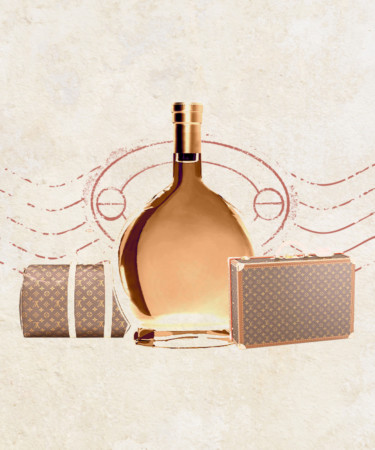Armagnac is frequently referred to by beverage enthusiasts as Cognac’s “country cousin.” This would seem an unfair comparison for a similar brandy that holds the distinction of being the oldest known distilled spirit still made worldwide (staking its claim in the year 1310); is arguably richer in both flavor and tradition than its more “sophisticated” counterpart; and has an equivalent ability to age gracefully — producing widely available, aged expressions going back as far as 80 years. (Why these elder Armagnacs haven’t achieved the same fervent fan base as the much pricier “unicorn” whiskies of lesser age is a conversation for another day.)
Armagnac’s distinct flavor and texture is characterized by the region’s wide use of an alembic still or Armagnac Alambic. This energy-efficient method of continuous, single distillation, often heated by wood fire or gas (as opposed to steam, as with other continuous distillation methods), results in eaux-de-vie that exit the still at a relatively low proof: about 55 percent ABV, versus 72 percent or more for Cognac or single malt Scotch. “The resultant eaux-de-vie, which exit the still at the lowest ABV of any spirit, are full of flavor compounds and congeners which provide Armagnac with its distinctive richness,” says May Matta-Aliah, French wine scholar and Armagnac expert, who has partnered with producers in the region for over 13 years.
So then the city cousin, country cousin duality would seem an unfair comparison, if not for one important cultural hallmark of Armagnac: Many bottlings throughout the region are produced via small, traveling stills that are pulled from farm to farm on the back of tractors. “This is something that I don’t think you see in any other spirit-producing region,” says Matta-Aliah. As further evidence of this regional quirk, some of the stills are even given names, such as Marc Saint-Martin’s traveling still Marie-Jeanne. Over in Cognac, with its sleek maisons and state-of-the-art visitors centers? Not so much.
“What [these traveling stills] reveal about the region at large is the artisanal nature of the product, which is often produced at farms that are practicing polyculture — growing corn, wheat, and cereals alongside their vines,” says Matta-Aliah. Armagnac isn’t the primary operation for many of the farmers who grow the region’s four permitted grapes: Baco 22A, Folle Blanche, Colombard, and Ugni Blanc (the latter of which is consequently the signature grape in Cognac). “They are farmers and have cellars to house their Armagnac but do not necessarily have the means to also be expert distillers, which is a very specific craft,” says Matta-Aliah. “While fields and vineyards need tending year round, distillation only takes place for one or two weeks of the year.”
Conversely, the five mobile distillery operations that still exist in Armagnac today are generally not farmers and producers themselves, with the exception of Marc Saint-Martin, one of the most popular mobile distillers. Distillers require a specific license to operate their traveling stills, on top of which, each individual still must also be registered and licensed. “Distillation is a very specific skill set and often, it is a generational skill learned over time and through apprenticing for years,” says Matta-Aliah. “As such, that is their main focus.”
The numbers paint a picture of the cooperative, community-centric vibe that keeps Armagnac from reaching the same luxury status of its big-brand Cognac neighbors like Courvoisier and Hennessy. In a region with 703 grape growers, only 48 have their own alambics, with the rest of Armagnac’s producers relying on five professional (stationary) distilleries, three cooperatives, and the five traveling stills that account for 20 percent of the region’s production. From November to February every year, Marie-Jeanne and her siblings traverse the country roads of Armagnac and get to work.
